Pet Supplies
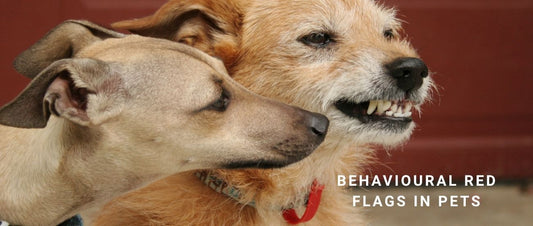
Behavioural Red Flags in Pets: Training Adjustm...
Pets bring joy, companionship, and comfort to households across Australia. Yet, alongside the wagging tails and gentle purrs, there are times when our furry companions display troubling behaviours that leave...
Behavioural Red Flags in Pets: Training Adjustm...
Pets bring joy, companionship, and comfort to households across Australia. Yet, alongside the wagging tails and gentle purrs, there are times when our furry companions display troubling behaviours that leave us concerned, frustrated, or even fearful.

Excessive Barking in Multi-Dog Homes: Behaviour...
Barking is one of the most recognisable forms of canine communication. For dogs, it is a way to express excitement, alertness, fear, or even boredom. In a single-dog household, barking...
Excessive Barking in Multi-Dog Homes: Behaviour...
Barking is one of the most recognisable forms of canine communication. For dogs, it is a way to express excitement, alertness, fear, or even boredom. In a single-dog household, barking can often be easier to manage and redirect. However, in a multi-dog home, barking behaviours frequently become more complex. One dog’s bark can trigger another’s, leading to what many owners describe as a domino effect of noise.

Senior Pets and Behavioural Changes: Training A...
Watching a beloved pet grow old is a bittersweet experience. Over the years, they’ve been our companions, protectors, entertainers, and sometimes even our confidants. As pets enter their golden years,...
Senior Pets and Behavioural Changes: Training A...
Watching a beloved pet grow old is a bittersweet experience. Over the years, they’ve been our companions, protectors, entertainers, and sometimes even our confidants. As pets enter their golden years, however, it’s common to notice behavioural changes alongside physical aging. Your once energetic dog may now prefer shorter walks, or your previously playful cat may spend more time sleeping in a quiet corner.
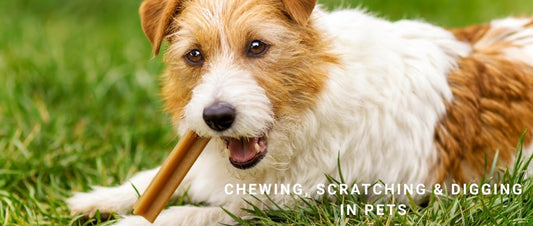
Chewing, Scratching & Digging in Pets: Behaviou...
For many Australian pet owners, few things are as frustrating as coming home to a chewed-up shoe, a shredded couch arm, or a freshly dug hole in the garden. At...
Chewing, Scratching & Digging in Pets: Behaviou...
For many Australian pet owners, few things are as frustrating as coming home to a chewed-up shoe, a shredded couch arm, or a freshly dug hole in the garden. At first glance, these behaviours can seem like deliberate acts of defiance. In reality, chewing, scratching, and digging are not signs of a “bad pet.” They are instinctual behaviours rooted in the evolutionary history of cats and dogs.

Food Begging in Pets: Behavioural Causes and Tr...
Anyone who has shared a meal with a pet nearby knows the look—wide eyes, pawing at your leg, or an insistent meow from the kitchen bench. Food begging is one...
Food Begging in Pets: Behavioural Causes and Tr...
Anyone who has shared a meal with a pet nearby knows the look—wide eyes, pawing at your leg, or an insistent meow from the kitchen bench. Food begging is one of the most common behaviours pet owners face, yet it’s also one of the most frustrating. What starts as “cute” can quickly spiral into an unhealthy and disruptive habit.

Tail Chasing in Dogs: Behavioural Insights and ...
Dogs chasing their tails is one of the most amusing sights for pet owners. At first glance, it looks playful, almost like a child’s game. Many dog owners in Australia...
Tail Chasing in Dogs: Behavioural Insights and ...
Dogs chasing their tails is one of the most amusing sights for pet owners. At first glance, it looks playful, almost like a child’s game. Many dog owners in Australia laugh at the sight and even share videos of their pets spinning in circles, convinced it’s a harmless quirk. But is it always just fun?

Play Fighting vs Aggression: Behaviour Explaine...
Anyone who has watched kittens tumbling together or puppies wrestling on the lawn knows how entertaining and endearing play fighting can be. Yet, for many Australian pet owners, the line...
Play Fighting vs Aggression: Behaviour Explaine...
Anyone who has watched kittens tumbling together or puppies wrestling on the lawn knows how entertaining and endearing play fighting can be. Yet, for many Australian pet owners, the line between harmless play and dangerous aggression is often blurred. One moment your cat might be batting gently at your hand, and the next, the claws are out. Or two dogs in the park might begin with playful chasing, only for the energy to suddenly escalate into snarling.

Storm & Firework Anxiety: Behavioural Fears and...
For many Australian households, pets are not just companions but family members. Yet, events that humans often celebrate—like New Year’s Eve fireworks—or natural occurrences such as summer thunderstorms, can be...
Storm & Firework Anxiety: Behavioural Fears and...
For many Australian households, pets are not just companions but family members. Yet, events that humans often celebrate—like New Year’s Eve fireworks—or natural occurrences such as summer thunderstorms, can be terrifying for cats and dogs. The sudden booms, crackles, flashes of light, and changes in air pressure trigger instinctive fears that can leave pets trembling, hiding, or even attempting to escape.
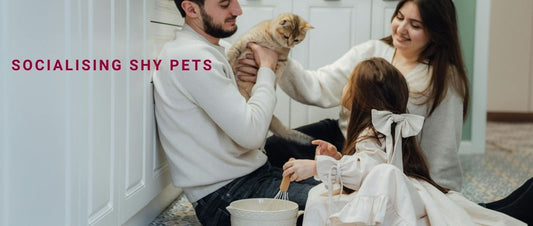
Socialising Shy Pets: Behavioural Challenges an...
Every pet has a unique personality, just like people. Some dogs and cats are naturally outgoing, eager to greet strangers, and curious about every sound and smell. Others, however, may...
Socialising Shy Pets: Behavioural Challenges an...
Every pet has a unique personality, just like people. Some dogs and cats are naturally outgoing, eager to greet strangers, and curious about every sound and smell. Others, however, may shrink away from new people, hide under the couch during gatherings, or cling nervously to their owners. These are what we often call shy pets.

Why Dogs Howl: Behavioural Causes and Training ...
Dogs are often celebrated for their barks, wags, and playful antics, but their howls—haunting, melodic, and sometimes frustrating—carry a deeper meaning. While many pet owners in Australia first experience howling...
Why Dogs Howl: Behavioural Causes and Training ...
Dogs are often celebrated for their barks, wags, and playful antics, but their howls—haunting, melodic, and sometimes frustrating—carry a deeper meaning. While many pet owners in Australia first experience howling as a quirky behaviour, it can quickly become a concern when it grows excessive, disturbs neighbours, or signals distress.
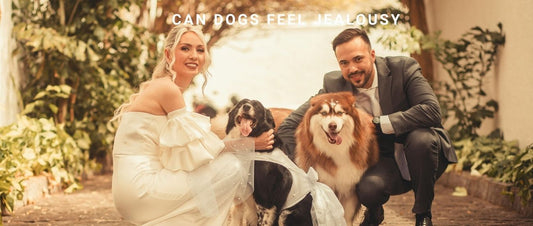
Can Dogs Feel Jealousy? Behavioural Insights an...
Every dog owner in Australia knows that their furry companion is deeply loyal and affectionate. But what happens when a new pet, family member, or even a friend competes for...
Can Dogs Feel Jealousy? Behavioural Insights an...
Every dog owner in Australia knows that their furry companion is deeply loyal and affectionate. But what happens when a new pet, family member, or even a friend competes for that affection? Many owners report behaviours that look suspiciously like jealousy—dogs pushing their way between people, whining when their owner pats another pet, or even growling when attention shifts elsewhere.

Separation Destruction in Dogs: Behaviour Expla...
Every Australian dog owner knows the joy of coming home to a wagging tail and excited barks. But for some, that homecoming is overshadowed by shredded cushions, chewed doors, or...
Separation Destruction in Dogs: Behaviour Expla...
Every Australian dog owner knows the joy of coming home to a wagging tail and excited barks. But for some, that homecoming is overshadowed by shredded cushions, chewed doors, or clawed carpets. This problem, known as separation destruction, is not just frustrating—it can be heartbreaking, costly, and even dangerous for dogs who injure themselves in the process.

Jumping Dogs: Behavioural Reasons and Training ...
Picture this: You arrive home after a long day at work, and the moment you step through the door, your dog launches at you with uncontainable excitement. For many Australian...
Jumping Dogs: Behavioural Reasons and Training ...
Picture this: You arrive home after a long day at work, and the moment you step through the door, your dog launches at you with uncontainable excitement. For many Australian pet owners, this scenario is all too familiar. While the enthusiasm is heartwarming, the behaviour—scratched legs, muddy paw prints, or worse, a toppled visitor—can quickly become problematic.

Introducing New Pets: Behavioural Insights and ...
Bringing a new pet into your household is a moment filled with excitement and anticipation. Whether it’s adopting a rescue cat, introducing a puppy into a dog-friendly home, or balancing...
Introducing New Pets: Behavioural Insights and ...
Bringing a new pet into your household is a moment filled with excitement and anticipation. Whether it’s adopting a rescue cat, introducing a puppy into a dog-friendly home, or balancing the dynamics between cats and dogs, the process requires far more than enthusiasm alone. Successful introductions hinge on an understanding of animal behaviour, a commitment to training, and the right environmental setup.

Signs of Stress in Pets: Behavioural Clues and ...
Every pet owner wants their furry companion to live a happy, relaxed life. Yet, stress is not only a human problem—it deeply affects pets as well. Dogs and cats may...
Signs of Stress in Pets: Behavioural Clues and ...
Every pet owner wants their furry companion to live a happy, relaxed life. Yet, stress is not only a human problem—it deeply affects pets as well. Dogs and cats may not express their worries in words, but their behaviour tells a powerful story if we know how to interpret it.
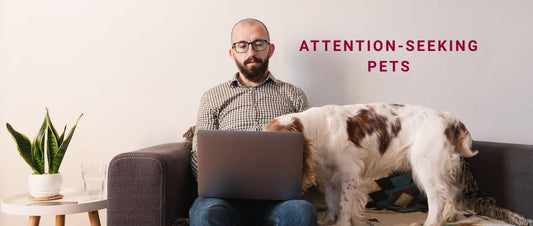
Attention-Seeking Pets: Behavioural Signs and T...
Every pet owner loves a cuddle, a wagging tail, or a soft purr when they walk through the door. Pets thrive on companionship, and in many ways, their affection is...
Attention-Seeking Pets: Behavioural Signs and T...
Every pet owner loves a cuddle, a wagging tail, or a soft purr when they walk through the door. Pets thrive on companionship, and in many ways, their affection is one of the reasons we cherish them. Yet, there’s a line between normal bonding and behaviour that signals excessive attention-seeking.

Zoomies Explained: High-Energy Behaviour and Tr...
If you have ever watched your cat suddenly dart through the living room like a furry missile, or your dog sprint in joyful circles around the backyard, you have witnessed...
Zoomies Explained: High-Energy Behaviour and Tr...
If you have ever watched your cat suddenly dart through the living room like a furry missile, or your dog sprint in joyful circles around the backyard, you have witnessed what many pet owners call the “zoomies.” Scientifically referred to as Frenetic Random Activity Periods (FRAPs), these high-energy bursts often appear out of nowhere, leaving owners amused, puzzled, or even concerned.

Why Do Dogs Lick Excessively? Behavioural Cause...
Licking is one of the most common behaviours dog owners encounter. At first glance, it often seems harmless—dogs lick to show affection, explore their environment, or simply to enjoy the...
Why Do Dogs Lick Excessively? Behavioural Cause...
Licking is one of the most common behaviours dog owners encounter. At first glance, it often seems harmless—dogs lick to show affection, explore their environment, or simply to enjoy the salty taste of human skin. However, when this behaviour becomes excessive, it can be a source of concern for both the dog and its owner.
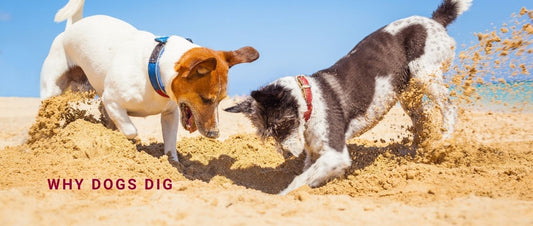
Why Dogs Dig: Behavioural Instincts and Trainin...
For many Australian dog owners, a freshly dug hole in the yard is a familiar sight. Whether it’s a patch of lawn ripped apart, flower beds overturned, or a determined...
Why Dogs Dig: Behavioural Instincts and Trainin...
For many Australian dog owners, a freshly dug hole in the yard is a familiar sight. Whether it’s a patch of lawn ripped apart, flower beds overturned, or a determined attempt to tunnel under the fence, digging can quickly turn into one of the most frustrating canine behaviours. But before labelling your dog as “naughty” or “destructive”, it’s important to step back and understand why dogs dig in the first place.
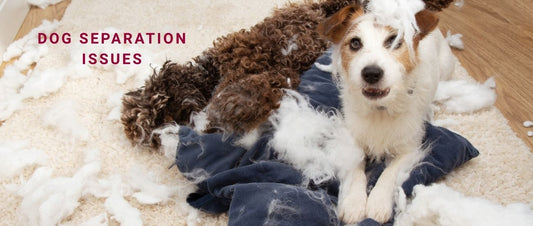
Dog Separation Issues: Behavioural Triggers and...
Separation anxiety is more than just a dog missing its owner—it is a serious behavioural issue that can impact the wellbeing of both pets and their families. In Australia, where...
Dog Separation Issues: Behavioural Triggers and...
Separation anxiety is more than just a dog missing its owner—it is a serious behavioural issue that can impact the wellbeing of both pets and their families. In Australia, where over 48% of households own at least one dog (Animal Medicines Australia, 2022), this challenge is particularly widespread. With many owners balancing busy work schedules, long commutes, or frequent travel, dogs often spend extended hours alone, leading to behavioural and emotional difficulties.
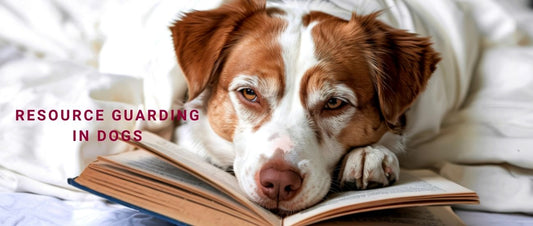
Resource Guarding in Dogs: Behavioural Preventi...
Resource guarding in dogs is one of the most common behavioural challenges faced by pet owners, yet it is often misunderstood. At its core, resource guarding occurs when a dog...
Resource Guarding in Dogs: Behavioural Preventi...
Resource guarding in dogs is one of the most common behavioural challenges faced by pet owners, yet it is often misunderstood. At its core, resource guarding occurs when a dog feels the need to protect something it values—whether that is food, a toy, a resting spot, or even a favourite person. The behaviour may range from subtle signs such as stiffening and staring, to more obvious warnings like growling, snapping, or even biting.
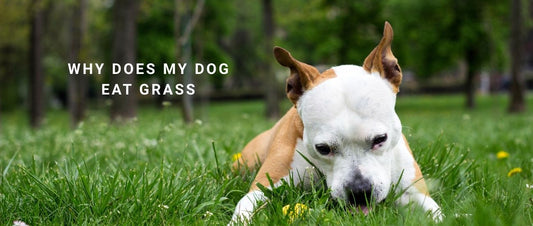
Why Does My Dog Eat Grass? Behaviour Insights a...
Many Australian dog owners have asked themselves the same question at some point: “Why does my dog eat grass?” For some, it happens occasionally during a walk, while for others,...
Why Does My Dog Eat Grass? Behaviour Insights a...
Many Australian dog owners have asked themselves the same question at some point: “Why does my dog eat grass?” For some, it happens occasionally during a walk, while for others, their dog seems to snack on the lawn every time they’re outside. This behaviour often sparks concern, with worries ranging from nutritional deficiencies to possible illness.
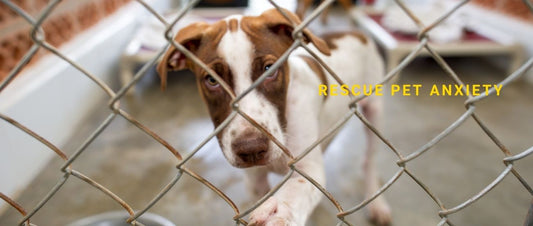
Rescue Pet Anxiety: Behavioural Fears and Train...
Bringing a rescue pet into your home is one of the most rewarding acts of compassion. In Australia, thousands of cats and dogs are rehomed every year through the RSPCA,...
Rescue Pet Anxiety: Behavioural Fears and Train...
Bringing a rescue pet into your home is one of the most rewarding acts of compassion. In Australia, thousands of cats and dogs are rehomed every year through the RSPCA, local shelters, and foster programs. Many of these animals have faced difficult pasts—neglect, abandonment, or even abuse—which often leaves them with lingering fears and anxiety.

Is Your Dog Bored? Behavioural Signs and Enrich...
Dogs are intelligent, social animals with deep-rooted instincts shaped by thousands of years of working alongside humans. From herding sheep in the Outback to guarding homes and providing companionship, their...
Is Your Dog Bored? Behavioural Signs and Enrich...
Dogs are intelligent, social animals with deep-rooted instincts shaped by thousands of years of working alongside humans. From herding sheep in the Outback to guarding homes and providing companionship, their roles have always involved both physical activity and mental engagement. But in modern Australia, many dogs live in suburban homes or apartments, with limited daily challenges. While they may be loved and cared for, they often lack the stimulation they naturally crave.

Destructive Chewing in Dogs: Behavioural Causes...
If you have ever come home to find your dog has chewed through a shoe, ripped apart a cushion, or gnawed on the corner of your furniture, you are not...
Destructive Chewing in Dogs: Behavioural Causes...
If you have ever come home to find your dog has chewed through a shoe, ripped apart a cushion, or gnawed on the corner of your furniture, you are not alone. Destructive chewing is one of the most common behavioural complaints among Australian dog owners. While it can be frustrating and costly, chewing is not always a sign of bad behaviour—in fact, it is a natural canine instinct that can become problematic when left unmanaged.

Dog Aggression Explained: Causes, Training Solu...
Aggression in dogs is one of the most common yet misunderstood behavioural challenges faced by pet owners in Australia. From growling and barking to lunging and even biting, aggressive behaviour...
Dog Aggression Explained: Causes, Training Solu...
Aggression in dogs is one of the most common yet misunderstood behavioural challenges faced by pet owners in Australia. From growling and barking to lunging and even biting, aggressive behaviour can be alarming, unpredictable, and potentially dangerous. For many families, it creates stress in the household and, in some cases, tension within the community.

Separation Anxiety in Dogs: Behavioural Insight...
Separation anxiety is one of the most common behavioural problems faced by dog owners, yet it remains one of the least understood. For many Australian families, the joy of bringing...
Separation Anxiety in Dogs: Behavioural Insight...
Separation anxiety is one of the most common behavioural problems faced by dog owners, yet it remains one of the least understood. For many Australian families, the joy of bringing home a dog can quickly become clouded by destructive behaviour, constant barking, or distress whenever the pet is left alone. While some owners might mistake these actions for stubbornness or “bad behaviour,” the reality is that the dog is experiencing genuine emotional distress.

Barking at Strangers Explained: Behavioural Tri...
For many Australian dog owners, barking at strangers is both a blessing and a challenge. On the one hand, dogs have served for centuries as natural guardians—alerting humans to potential...
Barking at Strangers Explained: Behavioural Tri...
For many Australian dog owners, barking at strangers is both a blessing and a challenge. On the one hand, dogs have served for centuries as natural guardians—alerting humans to potential threats and keeping intruders away. On the other hand, in today’s urban and suburban environments, excessive barking can quickly become a source of stress, conflict with neighbours, and even fines under local council nuisance-barking regulations.

Australian School and Public Space Pet Laws: Wh...
Australia is a nation of animal lovers. With more than 29 million pets owned nationwide—outnumbering people in many households—understanding where our furry companions are legally welcome is more important than...
Australian School and Public Space Pet Laws: Wh...
Australia is a nation of animal lovers. With more than 29 million pets owned nationwide—outnumbering people in many households—understanding where our furry companions are legally welcome is more important than ever. As communities grow and public spaces become busier, the question, “Where can I take my pet?” is no longer simple.

Pet-Friendly Workplaces in Australia: What the ...
The face of the Australian workplace has changed dramatically over the last decade. More flexible work arrangements, the impact of COVID-19, and a record boom in pet ownership have all...
Pet-Friendly Workplaces in Australia: What the ...
The face of the Australian workplace has changed dramatically over the last decade. More flexible work arrangements, the impact of COVID-19, and a record boom in pet ownership have all contributed to the rise of pet-friendly workplaces across the country. For many employees, the idea of bringing a beloved dog, cat, or even rabbit to work is both a privilege and a pathway to greater workplace happiness.
